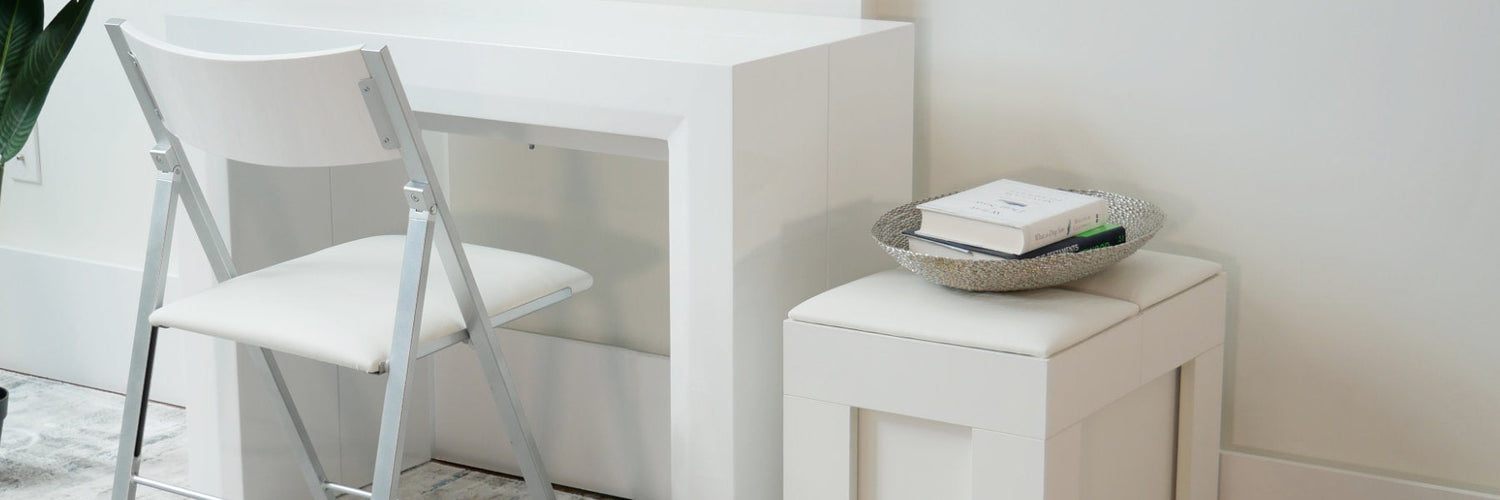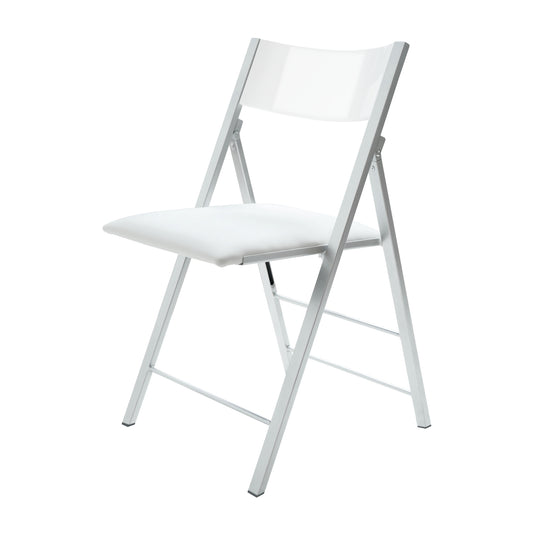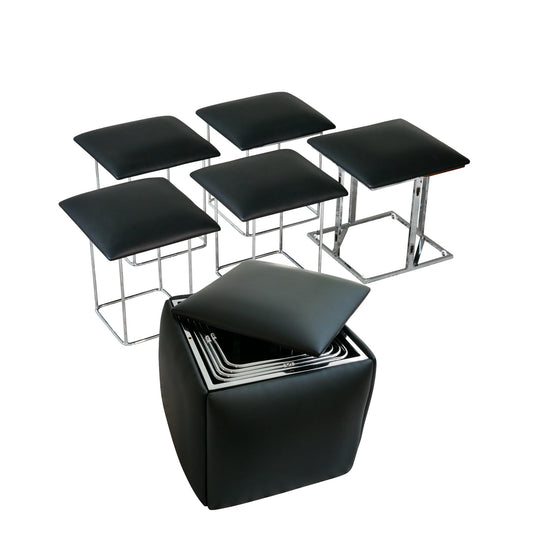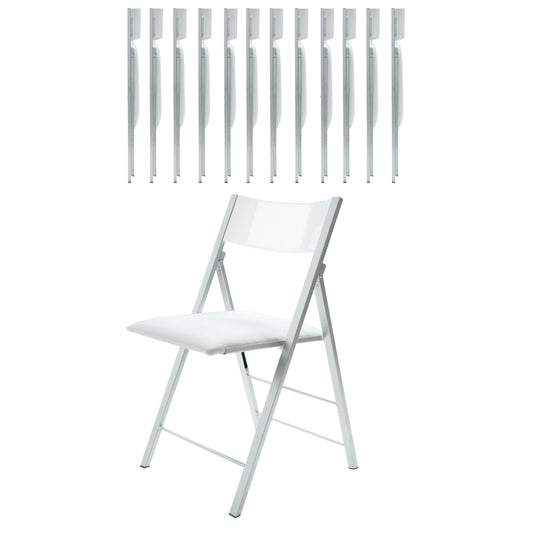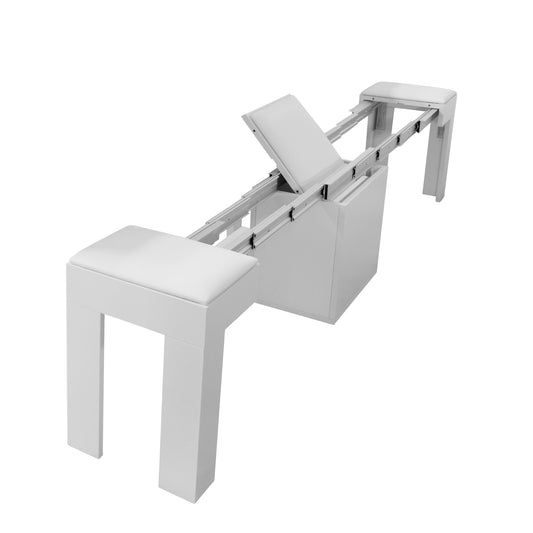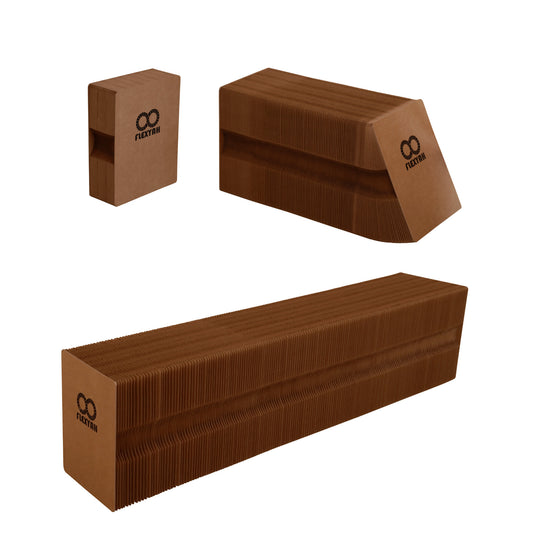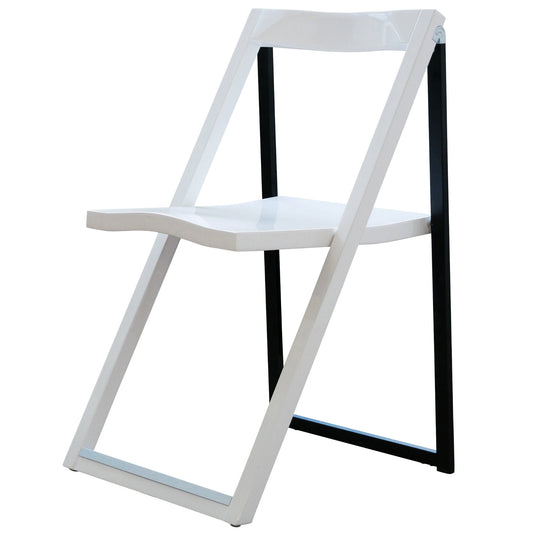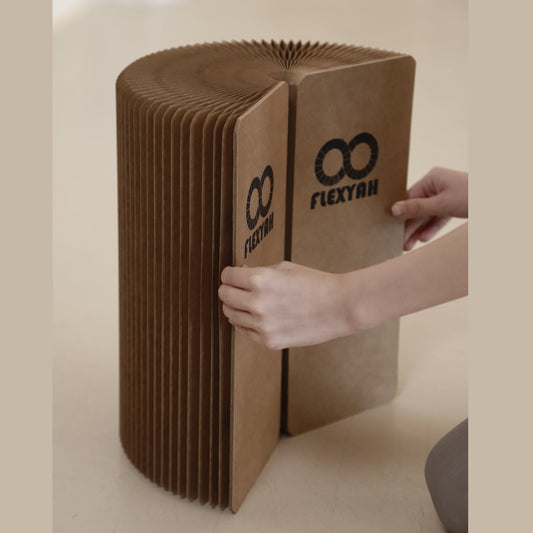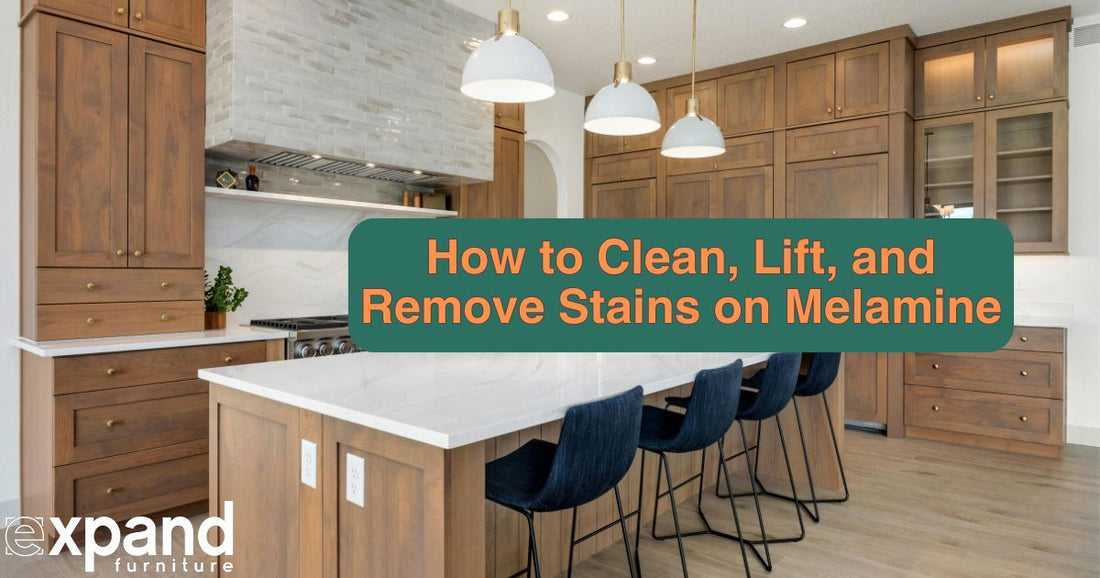Melamine panels are a popular choice for cabinets, furniture, and shelving thanks to their smooth finish, durability, ease of keeping clean, and affordability. While melamine panels and furniture are stain resistant because of their non-porous surface (meaning it can repeal water and liquid naturally), damage to the surface and buildup can cause melamine to stain.
This guide covers what causes melamine panels to stain so you know how they can be lifted, and then how to clean them while reducing the chances of damaging their finish so they look new for years.
What Causes Melamine Panels to Stain
Certain substances and habits can lead to melamine staining over time, especially if spills aren’t cleaned up promptly or the surface wears down.
Here’s what to watch out for:
- Spills that sit too long
- Kitchen oils and grease
- Strong dyes and pigments
- Dye transfer from other materials
Spills That Sit Too Long
Melamine panels have a non-porous, water-resistant coating bonded to a fiberboard or MDF core. When this coating gets chipped or worn, the absorbent core is exposed. Pigmented liquids like coffee, wine, tea, or juice can seep into these chipped areas, bind to the fibers, and become hard to remove. The longer the spill sits, the deeper it soaks in which can leave a permanent stain.
Kitchen Oils and Grease
Airborne oils, steam, and greasy fingerprints build up on melamine surfaces, especially near stoves or prep areas. If not cleaned regularly, the residue oxidizes into a sticky film that traps dust and dirt, dulls the finish, and makes the surface more challenging to clean and more prone to staining.
Although melamine panels are used in kitchen furniture like cabinets and drawers because they are heat resistant, there are temperature limitations. Warping and damage may start as low as 160 degrees Fahrenheit, so do not set hot pans, pots, and other materials on it as the destruction is how some of these stains work their way in or through.
Strong Dyes And Pigments
Food coloring, ketchup, mustard, and markers contain strong pigments that cling to melamine, especially if the surface is warm, worn, or greasy. These dyes are designed to stick, so they settle into tiny scratches or residue. The longer they sit, the deeper they set, making removing their stains more challenging.
Dye Transfer From Other Materials
When damp or warm, melamine can trap inks or dyes from newspapers, magazines, or dark fabrics, especially if the coating is worn. These pigments can transfer and stain the surface, sometimes permanently, so it’s best to keep melamine dry and avoid prolonged contact with printed or dark materials.
How To Counteract Melamine Panel Stains
Here’s how each solution works on each stain:
General Grime, Grease, and Fingerprints
A dish soap solution contains grease-cutting surfactants that break down and lift oils, dirt, and grime. Its gentle formula makes it safe for most melamine furniture coatings without damaging its finish.
Sticky Residue or Buildup (Grease Film)
A vinegar solution safely cuts through sticky residue and buildup on melamine. Its acetic acid alters the chemical charge at the molecular level to help release the sticky residue and grease, allowing the loosened molecules to bond with water and rinse away easily.
Coffee, Tea, Wine, or Juice Stains
A baking soda paste lifts stains by chemically weakening acidic pigments and gently scrubbing them away with a melamine safe sponge or cloth, making it a safe and effective cleaner for drink spills on melamine.
Marker, Pen, or Printer Ink
Rubbing alcohol can dissolve many inks by acting as a solvent that disrupts the bonds holding the ink's components together.
Food Coloring, Ketchup, Mustard
Vinegar’s acetic acid in a vinegar solution disrupts and weakens the chemical bonds in food coloring, ketchup (lycopene), and mustard (turmeric), weakening the stain’s hold on the surface.
Dye Transfer From Other Materials
Baking soda in baking soda paste removes dye transfer (from newspapers, fabrics, or packaging) using a combination of gentle abrasion and mild alkalinity to lift and break down the stain.
The Steps to Remove Stains From Melamine Panels
The steps to remove stains from melamine are different depending on the stain.
General Grime, Grease, and Fingerprints Stains
You will need:
- Small bowl or large cup (to mix the solution)
- Liquid dish soap
- Warm water
- Soft microfiber or cotton cloth
- Optional: Spray bottle
The steps to remove grime, grease, and fingerprint stains from melamine furniture are:
- Check The Manufacturer’s Website
- Mix A Cleaning Solution
- Wipe The Surface
- Dry
Step 1: Check The Manufacturer’s Website
Visit the manufacturer’s website for guidelines on which chemicals, cleaners, or products are recommended or should be avoided.
Step 2: Mix A Cleaning Solution
Mix this gentle cleaning solution in a bowl.
Dish Soap Solution
- 2-3 drops liquid dish soap
- 1 cup warm water
Step 3: Wipe the Surface
Dip your cloth in the solution (or spray it directly on the surface) and gently wipe down the panel, paying extra attention to greasy or smudged areas.
Step 4: Dry
Use a dry cloth to dry.
Sticky Residue or Buildup (Grease Film) Stains
You will need:
- Small bowl or large cup (to mix the solution)
- White vinegar
- Warm Water
- Soft microfiber or cotton cloth
- Optional: A few drops of dish soap
- Optional: Spray bottle
The steps to remove sticky residue or buildup stains from melamine are:
- Check The Manufacturer’s Website
- Mix A Cleaning Solution
- Let It Sit
- Wipe Clean
- Rinse
- Dry
Step 1: Check The Manufacturer’s Website
Visit the manufacturer’s website for guidelines on which chemicals, cleaners, or products are recommended or should be avoided.
Step 2: Mix A Cleaning Solution
Mix this cleaning solution in a bowl.
Vinegar Solution
- 1 cup white vinegar
- 1 cup warm water
- Add a few drops of dish soap for extra degreasing power if needed.
Step 3: Let It Sit
Allow it to sit for 1-2 minutes to loosen the hardened residue.
Step 4: Wipe Clean
Gently scrub the area using a soft cloth. Reapply as needed for stubborn buildup.
Step 5: Rinse
Wipe with a clean, damp cloth to remove any vinegar smell or leftover residue.
Step 6: Dry
Dry with a clean, dry cloth. Repeat if neccesary.
Coffee, Tea, Wine, or Juice Stains
You will need:
- Mixing Bowl
- Baking Soda
- Water
- Spoon
- Soft microfiber or cotton cloth
- Optional: White vinegar for added stain-fighting power
The steps to remove coffee, tea, wine, or juice stains from melamine are:
- Check The Manufacturer’s Website
- Make a Baking Soda Paste
- Apply the Paste
- Let It Sit (Optional)
- Wipe
- Dry
Step 1: Check The Manufacturer’s Website
Visit the manufacturer’s website for guidelines on which chemicals, cleaners, or products are recommended or should be avoided.
Step 2: Make a Baking Soda Paste
Mix this solution in a bowl.
Baking Soda Paste Formula:
- 1 tablespoon baking soda
- 2 tablespoons warm water
- Add a few drops of white vinegar to the paste for extra stain-fighting power
Step 3: Apply The Paste
Gently rub the paste onto the stained area using a soft cloth. Use circular motions with light pressure to avoid scratching the melamine.
Step 4: Let It Sit (Optional)
Let the paste sit for 2–3 minutes before wiping for deeper stains.
Step 5: Wipe
Wipe clean with a damp cloth to remove residue.
Step 6: Dry
Dry with a clean cloth.
Marker, Pen, or Printer Ink Stains
You will need:
- Rubbing alcohol (isopropyl alcohol, 70% or higher)
- Soft microfiber or cotton cloth you don’t mind getting getting stained
- Optional: Baking soda paste for stubborn stains
The steps to remove marker, pen, or printer ink stains from melamine are:
- Check The Manufacturer’s Website
- Apply Rubbing Alcohol
- Lift the Stain
- Rinse
- Dry
Step 1: Check The Manufacturer’s Website
Visit the manufacturer’s website for guidelines on which chemicals, cleaners, or products are recommended or should be avoided. This is especially important with chemicals like rubbing alcohol for cleaning melamine furniture coverings and panels.
Step 2: Apply Rubbing Alcohol
Dampen a cloth with a small amount of rubbing alcohol (do not pour directly on the surface). Gently blot or rub the ink stain in a circular motion.
Step 3: Lift The Stain
You should see the ink transfer to the cloth. Continue until the stain fades.
Step 4: Rinse
Wipe the area with a damp cloth to remove any residue.
Step 5: Dry
Dry with a clean cloth.
Food Coloring, Ketchup, Mustard Stains
You will need:
- Mixing Bowl
- White vinegar
- Warm water
- Soft cloth
The steps to remove food coloring, ketchup, or mustard stains from melamine are:
- Check The Manufacturer’s Website
- Mix a Vinegar Solution
- Wipe and Rinse
-
Dry
Step 1: Check The Manufacturer’s Website
Visit the manufacturer’s website for guidelines on which chemicals, cleaners, or products are recommended or should be avoided.
Step 2: Mix a Vinegar Solution
Mix this vinegar solution in a bowl.
Vinegar Solution
- 1 cup white vinegar
- 1 cup warm water
- Add a few drops of dish soap for extra degreasing power if needed.
Step 3: Wipe and Rinse
Wipe away loosened residue with a clean, damp cloth.
Step 4: Dry
Dry thoroughly.
Dye Transfer From Other Materials Stains
You will need:
- Mixing Bowl
- Baking soda
- Warm water
- Soft cloth
The steps to remove food coloring, ketchup, or mustard stains from melamine furniture are:
- Check The Manufacturer’s Website
- Mix a Paste
- Gently Scrub
- Rinse
- Dry
Step 1: Check The Manufacturer’s Website
Visit the manufacturer’s website for guidelines on which chemicals, cleaners, or products are recommended or should be avoided.
Step 2: Mix a Paste
Use this formula to make the paste.
Baking Soda Paste Formula:
- 1 tablespoon baking soda
- 2 tablespoons warm water
Step 3: Gently Scrub
Apply the paste and rub gently with a soft cloth. Avoid aggressive scrubbing.
Step 4: Rinse
Wipe off with a damp cloth.
Step 5: Dry
Dry thoroughly.
You can successfully tackle and lift stubborn stains from melamine furniture with the proper techniques and a few gentle cleaning tools. Whether you’re cleaning cabinets, furniture, or shelving, you're now able to keep your melamine surfaces spotless and ready for whatever life throws at them.
